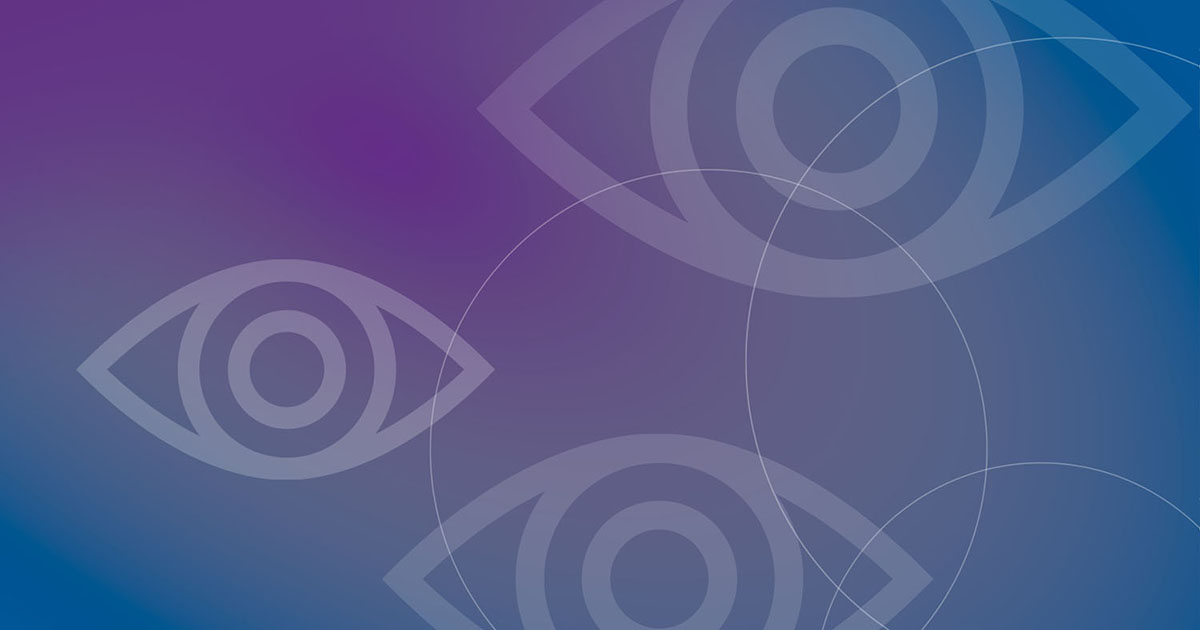Prevent Blindness represents millions of people of all ages, backgrounds, and circumstances across the country who live with low vision, vision impairment, and vision-related eye diseases. Advocacy at Prevent Blindness is part of our founding purpose, and our work to elevate vision and eye health as a public health priority continues to this day. Prevent Blindness meets this challenge by connecting patients to their legislators and policy makers and encouraging them to implement policies that protect and expand access to sight-saving care—including prevention, rehabilitation, and innovation—and ensure Americans can look forward to a lifetime of healthy vision.
Source: Prevent Blindness
Visit Page
In June 2022, Prevent Blindness created a Mental Health Task Force, composed of an interprofessional group of individuals interested in exploring how vision loss affects a person’s mental wellbeing and strategies to safeguard it. The group consisted of about 20 individuals and included patients with a variety of eye conditions, ophthalmologists, optometrists, peer counselors, psychologists, social workers, and vision rehabilitation specialists. The resource summarizes the themes that arose from four focus group discussions with this group.
Source: Prevent Blindness
Visit Page
The Vision Problems in the U.S. report provides useful estimates of the prevalence of sight-threatening eye diseases in Americans age 40 and older. This report includes information on the prevalence of blindness and vision impairment, significant refractive error, and the four leading eye diseases affecting older Americans: age-related macular degeneration, cataract, diabetic retinopathy and glaucoma.
Source: Prevent Blindness
Visit Page
Vision screening using evidence-based tools and procedures is an efficient and timely way to identify children with possible vision impairments; educate parents and caregivers about the importance of vision screening and their role in arranging and attending eye examinations for their children; refer identified children to eye care professionals for comprehensive, confirmatory eye examinations, diagnosis, initial treatment, and ongoing follow-up care; and help parents and caregivers to understand the importance of following the eye care professionals’ treatment plans.
Source: Prevent Blindness
Visit Page
To address discrepancies in vision screening in children, Prevent Blindness has compiled resources, a certification course, and guidance to screen children with evidence-based tools and procedures. This will help reduce inequality in children’s vision and eye health care in the United States.
Source: Prevent Blindness
Visit Page
Vision To Learn mobile clinics solve the problem by bringing eye exams and glasses, free of charge, to children at schools in low-income communities. It started with a single van in Los Angeles in 2012 and now operates in more than 145 school districts and 400 cities from Honolulu to Baltimore, becoming the largest school-based program of its kind in the nation.
Source: Vision to Learn
Visit Page
Listing of helpful resources for those with vision impairment or blindness.
Source: VisionServe Alliance
Visit Page
Preventive care can help you stay healthy and find medical problems early. Medicare offers a number of important preventive services–like yearly “Wellness” visits, screenings, and vaccines. This fact sheet gives important details about the yearly visits covered by Medicare and what’s included, preparing for visits, how much preventive services cost, and a closer look at vision and cognitive screening services.
Source: Alliance for Aging Research
Visit Page
To address many of the challenges faced in the field of eye care – including inequities in access and lack of integration within the health system – eye care needs to be an integral part of universal health coverage (UHC): all individuals to receive the health services they need, of sufficient quality, without experiencing financial hardship. The concept of UHC is globally adopted as the key guiding principle for health planning. To this end, the Eye care in health systems – guide for action (the Guide) was developed as a manual for health planners. The Guide outlines strategies and approaches proposed by WHO that provide practical, step-by-step support to Member States in the planning and implementation of integrated people-centred eye care (IPEC). Planning periods covered in the Guide include those that are short-term (annual operational planning), as well as mid- to longer term (eye care strategic plans).
Source: World Health Organization (WHO)
Visit Page
Report provides evidence on the magnitude of eye conditions and vision impairment globally, draws attention to effective strategies to address eye care, and offers recommendations for action to improve eye care services worldwide.
Source: World Health Organization (WHO)
Visit Page
This website includes news, reports, and infographics about eye care, vision care, vision impairment and blindness from the WHO.
Source: World Health Organization (WHO)
Visit Page
Work Incentives make it easier for people with disabilities to work and still receive medical benefits and, in some cases, cash benefits from Social Security. Work Incentives can help you through the transition to work and financial independence.
Source: Social Security Administration
Visit Page
Toolkit comprises a number of tools (evaluation forms, slides, figures, graphs, diagrams, scale tables, country guidelines, exam sheets, screening tools, cards, checklists, etc.) that can be used by primary health care workers to assess older persons’ health. Toolkit builds upon the concepts and principles of the WHO’s Active Ageing Policy published in 2002 on the occasion of the Second World Assembly on Ageing in Madrid.
Source: World Health Organization (WHO)
Visit Page
Children’s Screen time has become a concern for many parents and educators. This resource provides tips to reduce or prevent vision symptoms when using digital devices.
Source: Prevent Blindness
Visit Page
Resource Guide with hundreds of community resources and services available to people with vision loss and their loved ones. Focus is D.C. Metropolitan region, but many national resources are available as well.
Source: Prevention of Blindness Society of Metropolitan Washington
Visit Page

